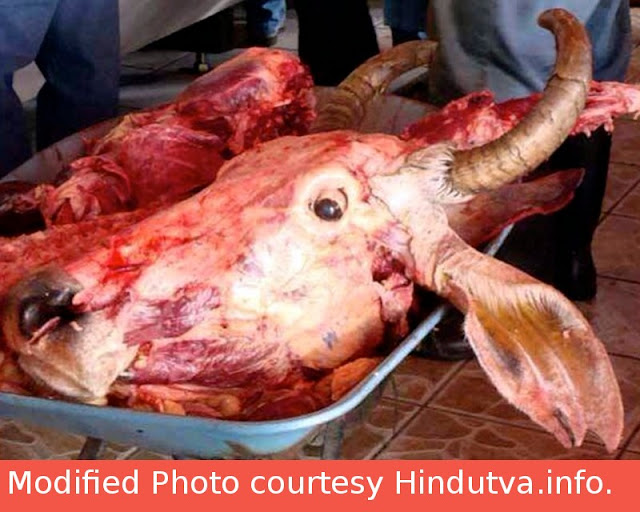#044, Shift from Raja Yoga to Bhakti Yoga
1. Karma Yoga: This has three branches.
First branch: Karma Yoga in the meaning of doing duty, dispassionately. Great men like Mahatma Gandhi, Lokmanya Tilak followed this path. There are no verses to prove that Hindu scriptures preached this path of duty in its purest sense. Gandhiji and Bala Gangadhara Tilak derived this sense, as they were great men working in the direction of Indian freedom.
Second branch: Karma Yoga in the meaning of doing duty as stipulated by a person's caste. This is preached by Bhagavad Gita and most Hindu scriptures. Arjuna was made to practise it by Krishna. Ramayana, Mahabharata (& Gita), Maha Bhagavata insist on people doing their duty stipulated by their caste.
Third branch: Performing sacrifices (yagnas), charity (Dana), penance (tapas). If these actions are performed people will get access to heaven. After exhausting the fruits of their good deeds (they have to return back to earth: Kshiin`ee pun`yee martya lookam vis`anti). Gita in some verses used this meaning. According to Gita and other scriptures, these actions are carried forward to successive births. Here there is some ambiguity. If people enjoy in heaven the fruits of their good deeds, and suffer in hell the fruits of their sins, till the fruits get exhausted, there should be no need for rebirth. The priests unable to clarify (because they themselves do not know), make people to believe that whenever people get difficulties it is due to actions of past birth which is to be suffered here. Swami Vivekananda also used to blame "karma" whenever there is no other reason to explain.
2. Path of Knowledge: Gnaana Yoga.
People have to uplift themselves by seeking knowledge. They should be able to gauge the world and its ephemerality correctly. (Jagat = "ja" which is born, "gat" which is lost and mortal, hence jagat or the world/creation). A person should be able to distinguish between what is true and untrue. The spirit within and outside the human is only one (Monism - Advaita). Realisation of this oneness within and outside the human, is "self-realisation". There is disapperance of individual, with universalisation of the realiser. Monism is easy to preach and almost impossible to practise. Even the Heads of Shankaracharya monasteries (Badri, Puri, Dwaraka, Sringeri, Kanchi etc.) practise it (only they must know to their conscience). Smarta branch of Hindus may believe in this. When it comes to practising, there is no need to idol or fallus (Shiva Lingam) worship. But they do it much against the preachings of Aadi Shankara. These deviations arise because the works attributed to Shankaracharya contain both monistic preachings of pure philosophy and Stootra (praising the God using Sanskrit verses) of the path of devotion. The Devotional hymn literature might have been added by latter S`ankaracharyas who were idol and fallus worshippers. This is nothing but dilution of monism.
3. Path of Devotion: Bhakti Yoga. This preaches absolute surrender to God. The devotee should keep himself continuously yoked (yoga) to God. After death, human soul gets merged with supreme spirit or God. Bhagavad Gita and Vaishnava books preach this. Visisht`aadvaita preached by Ramanuja preaches the idea of human soul merging with supreme spirit after death. Dvaita philosophy preached by Madhvacharya by and large supports the path of devotion, except that it does not accept the merging.
BACK TO VIVEKANANDA
Vivekananda was originally a disciple of Ramakrishna, a follower of path of devotion, worshipping the Mother Goddess Kali. Both were not averse to idol worship. They were not averse to vamachara or tantrika worship involving use of liquor (madyam) and meat (maamsam) and three other "ma kaaraas".
When SV started lecturing for money, separately from the World Parliament of Religions, he was unable to preach much on idol worship of Mother Goddess Kali, which will not be acceptable to Christian listeners, particularly women. Besides, Christianity also preached the path of devotion to Christ. There is not much difference between the Christian worship and Kali worship, except that there were no idols. Hence SV relegated the path of devotion to the backburner and brought to the fore, the plank of "Monism - Advaita Philosophy" which does not involve idol worship. This, the European audience found quite novel and was well received. As SV was not very particular about meat-eating (he was a voracious supporter of meat eating) or preventing alcohol sipping, receptivity was very good. The meditation sessions were also well received.
After returning back to India, he invited his foreign disciples to India. Among them Miss Henrietta Mueller (daughter of Max Mueller) contributed to the purchase of Belur Math land. SV visited Kashmir with Mrs. Ole Bull and other foreigners. Miss Mueller seems to have been disappointed with the tantrik and vamachara practises prevailing there and she gave an interview to a Bombay newspaper indicating that everything is bogus and left India.
On 25th October 1898, SV wrote from Belur to Christina Greenstidel (Christine):
"...I am now in Bhakti. As I am growing old, Bhakti is taking the place of Jnaana...".
this writer's observation: Why should a person should shift to devotion with advancement of age? It should be the other way round. With continuous meditation and inquiry, the seeker's mind should mature with knowledge of what is real and unreal. The promotion should be from the path of devotion to the path of knowledge and ultimately dedication of one's life to the society. If the preacher himself demotes himself, what will happen to the monistic philosophy taught by him to the Western World?
(To continue and correct further)



Comments